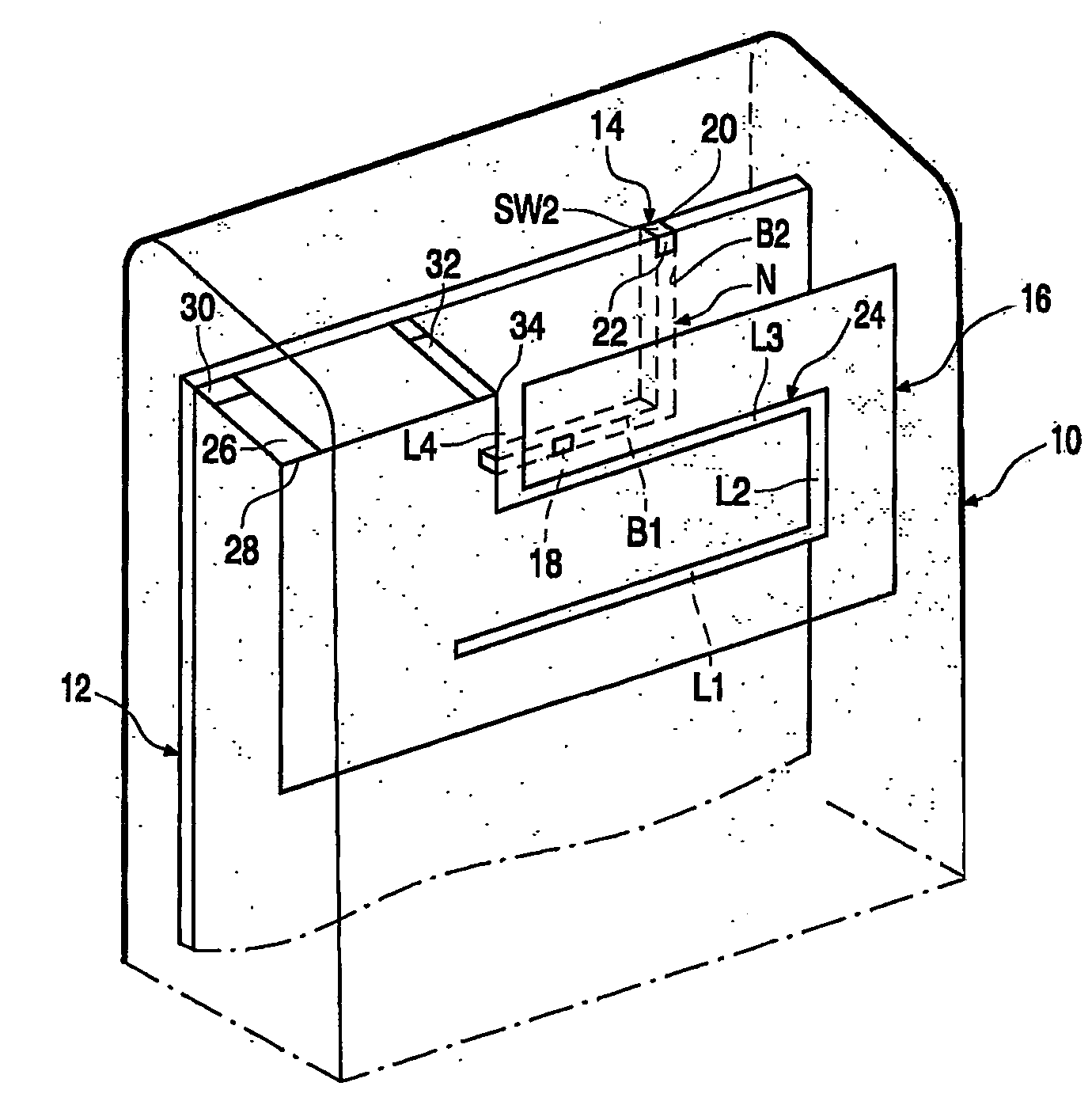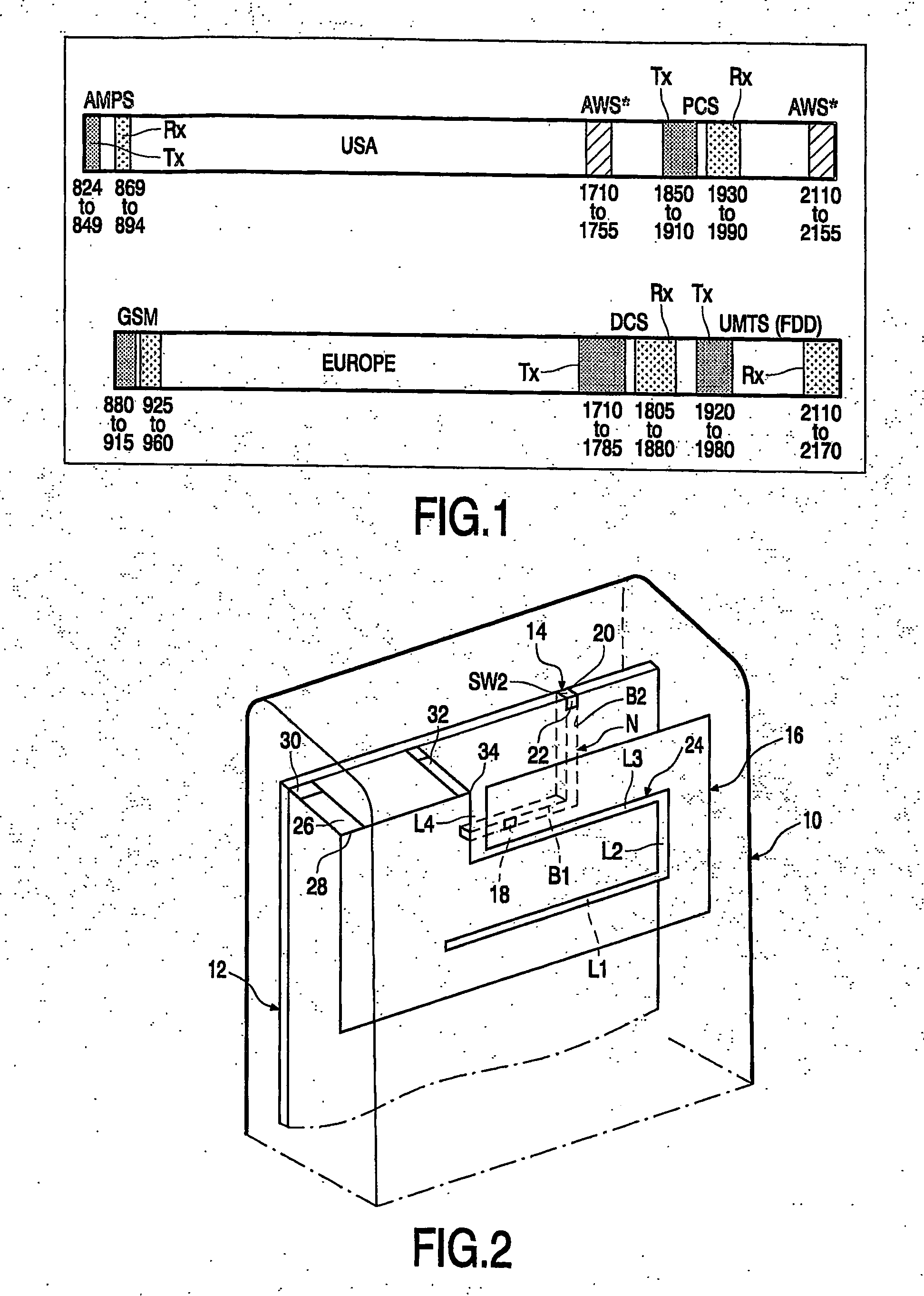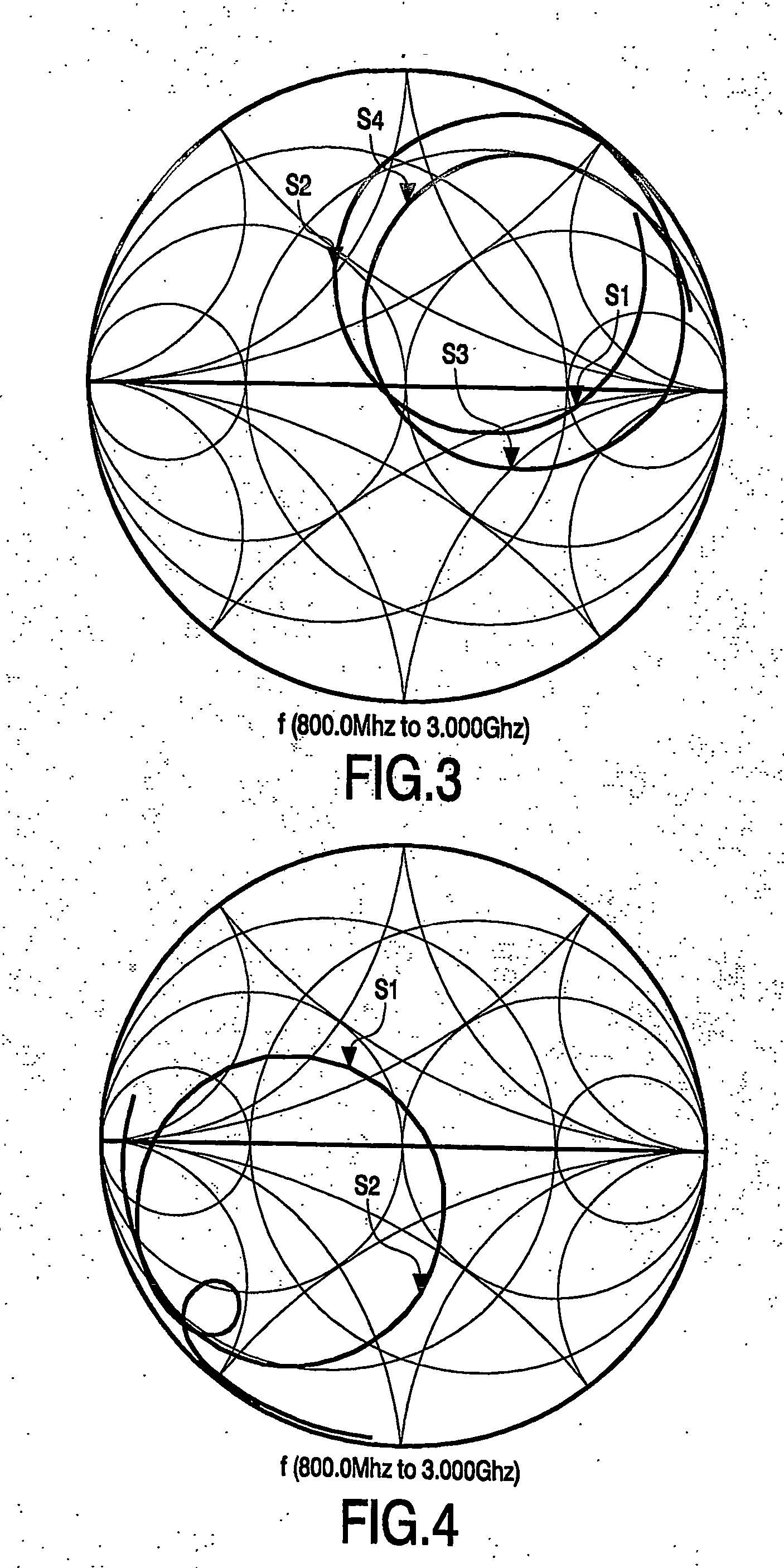Wireless terminals
a terminal and wireless technology, applied in the field of wireless terminals, can solve the problems of physical largeness of the antenna and difficulty in using over more than two cellular bands, and achieve the effect of reducing the fractional bandwidth of the antenna and low sar performan
- Summary
- Abstract
- Description
- Claims
- Application Information
AI Technical Summary
Benefits of technology
Problems solved by technology
Method used
Image
Examples
Embodiment Construction
[0018]FIG. 1 shows the European and North American cellular bands. The transmit bands Tx are shown in dark grey (to the left of each pair), while the receive bands Rx are shown in light grey (to the right). In Europe both the GSM and DCS bands, 880 to 960 MHz and 1710 to 1880 MHz, respectively, accommodate time division duplex systems, while the UMTS bands, 1920 to 1980 MHz (transmit) and 2110 to 2170 MHz (receive), are predominantly frequency division, full duplex. In the USA, a mix of systems and duplex methods are used in the AMPS and PCS bands, 824 to 894 MHz and 1850 to 1990 MHz, respectively. The advanced wireless systems (AWS) bands, 1710 to 1755 MHz and 2110 to 2155 MHz, have recently been allocated for 3G systems, though it has yet to be resolved how the bands will be used.
[0019] Currently many phones are being made to support the European GSM and DCS bands together with the US PCS bands (in the TDMA IS54 / 136 mode). Since many other countries have adopted either the Europe...
PUM
 Login to View More
Login to View More Abstract
Description
Claims
Application Information
 Login to View More
Login to View More - R&D
- Intellectual Property
- Life Sciences
- Materials
- Tech Scout
- Unparalleled Data Quality
- Higher Quality Content
- 60% Fewer Hallucinations
Browse by: Latest US Patents, China's latest patents, Technical Efficacy Thesaurus, Application Domain, Technology Topic, Popular Technical Reports.
© 2025 PatSnap. All rights reserved.Legal|Privacy policy|Modern Slavery Act Transparency Statement|Sitemap|About US| Contact US: help@patsnap.com



